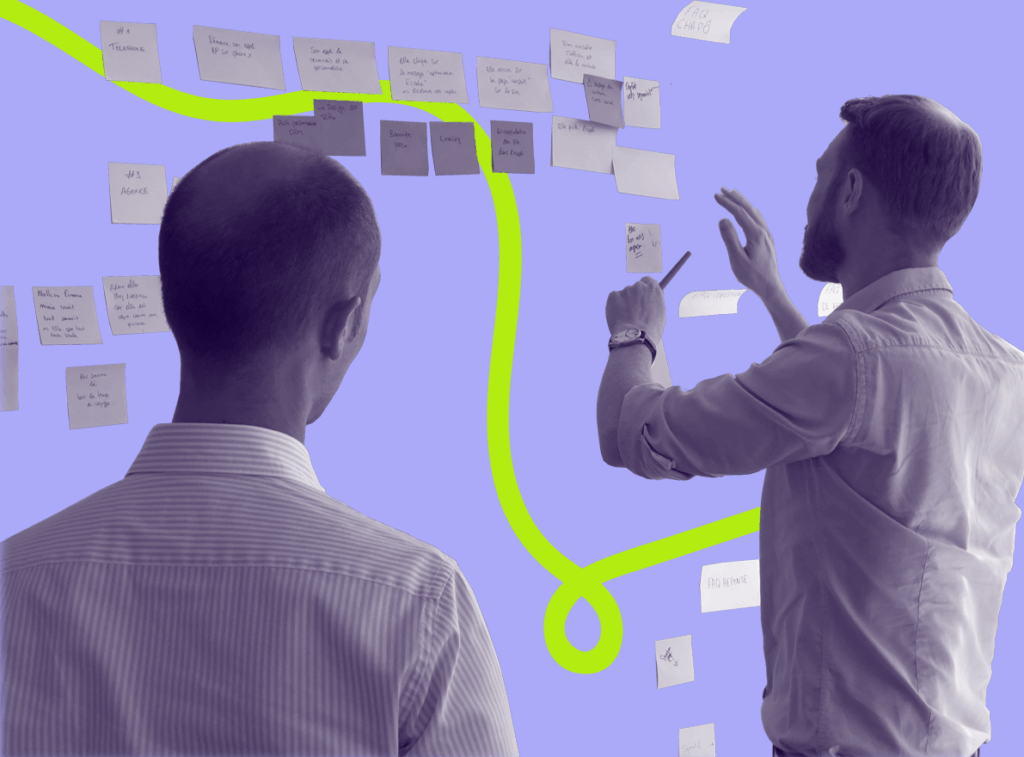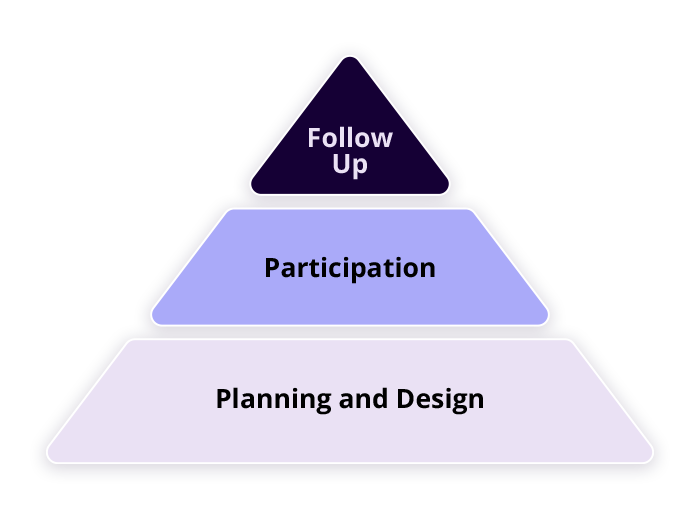Running a Roadmap Workshop
Running a roadmap workshop, whether that is creating a strategic roadmap over several years or an agile one that is open to constant change due to market fluctuations, is critical if they are to be successful.

If roadmaps are created on their own then they run the risk of becoming shelfware, as the key stakeholders will not have any emotional connections to the roadmap. Without that, emotional connection will not be there and the whole purpose of the roadmap which is the unit the company or department(s) behind a series of common goals and objectives will be lost, and people will go and do their own thing causing the sorts of issues you are looking to avoid by structuring the roadmap

(Roadmap Workshop Structure)
Planning and Design
1. Notice and planning – You must bring the right people into the room (physically or virtually), otherwise you might have only half a roadmap and lose the momentum you have built up. Who will give you the breath and depth you require? You may need to plan this 6-8 weeks in advance.
2. Design the roadmap structure in advance. Ensure you go armed with a structured plan in advance, as this will help guide your participants in the right direction. It will also help them, as trying to populate a blank piece of paper is hard work. Designing a roadmap structure and then having it professionally printed and displayed on the wall creates a positive impression when your stakeholders enter the room.
3. What do you already know? This a key part of the planning process and something that you can use to structure the workshop. For most digital transformation leaders or enterprise architects, the company strategy will have already been set. What you have to do is ensure that whatever decisions are proposed or projects wished for can be aligned to key and measurable objectives. Why are we doing what we are doing. What purpose does it solve? Where are we know? Where do we want to get to? Only 5% of people read their company strategy, so it is vital that you know it and can help guide the workshop in relation to that. When people know that their project is directly related to a core strategic objective then their motivation levels increase a they have activity with achievement.
4. Set an agenda. This may sound incredibly obvious but getting an agenda across in advance is critical. You are asking people to give up between 2 hours and an entire day of their time. They have to know what they are signing up for. It also gives you the structure to manage time appropriately.
Participation
5. Get participants to present. I also recommend getting the participants to present for no more than a couple of minutes on who they are, they main challenges and what they want to get out of today. Don’t assume that because everyone is there they are all on the same page with the same agenda. It is vital that all participants and get an insight into the thinking and challenges of everyone else. I remember one of the biggest mistakes that I made, when running a workshop for a major FMCG company in 2019, I assumed that the Director of Transformation and Director of Architecture were already fully aligned. They were not, as a result I had to spend most of my time mediating between the two. This made the other participants nervous and reluctant to contribute and the whole thing was a total disaster!
6. Key questions: Come prepared with some key questions that you can use to structure the meeting. What are the critical goals? What time frames need to be considered? What other processes, methods and systems should the topic link to etc? “You gain credibility not through the answers you give, but the questions you ask.”
7. Your key tools come armed with lots of Post-it notes, of different sizes and colours as well as plenty of Sharpies! Also, purchasing the arrow post-it notes is excellent for showing dependencies. Sticky dots are handy for a voting process. Honestly, it will never cease to amaze me how people get excited about different forms of Post-it notes.
8. Drive to completion. Time management is key, and the more people, the harder it is to manage. However, ensuring that some form of outcome is achieved at the end id very important. Think of how long it took you to get everyone together in the first place. Depending on the size of the group, you may want 2 or more facilitators to help achieve this objective.
Following Up
9. Have a meeting – book a meeting. At the end of the workshop, everyone should be feeling positive about the experience. This is a great time to schedule the next meeting, as you have a captive audience, and getting the next step booked is critical.
10. Publish a roadmap the next day. This is essential if you want to maintain momentum. if you can take everything off the roadmap produced in the workshop and get it out the next day in digital form (don’t worry about the missing info there will be a lot) to all of the participants, you will be in great shape. PowerPoint can be very clunky for this, but Konexis gives the option to create something powerful very quickly. The great success that we ever had was was Tesco Business Services when the CEO loved the published roadmap in Konexis that he had within a our of the meeting concluding!
11. It is likely to be several weeks if not months before you all meet again. Therefore having a roadmap tool that is easy to update and share is critical for the constant iterations you will make, no roadmap is every truly finalised. It is also important to fill in information gaps that you may have, or arguably even more importantly show where there are knowledge gaps in the roadmap. Don’t be afraid to acknowledge those.
Conclusion
Creating a successful roadmap workshop is just the beginning of your transformation journey. The real value lies not in the perfectly crafted document you produce, but in the shared understanding, commitment, and momentum you build among your stakeholders. Remember, a roadmap is a living document that should evolve as your business does – embrace the iterations, celebrate the progress, and don’t be afraid to pivot when market conditions demand it.
Try it for free
Experience the difference Konexis can make to your strategic communication. Get started and try our roadmap tool for free with a one month trial.

